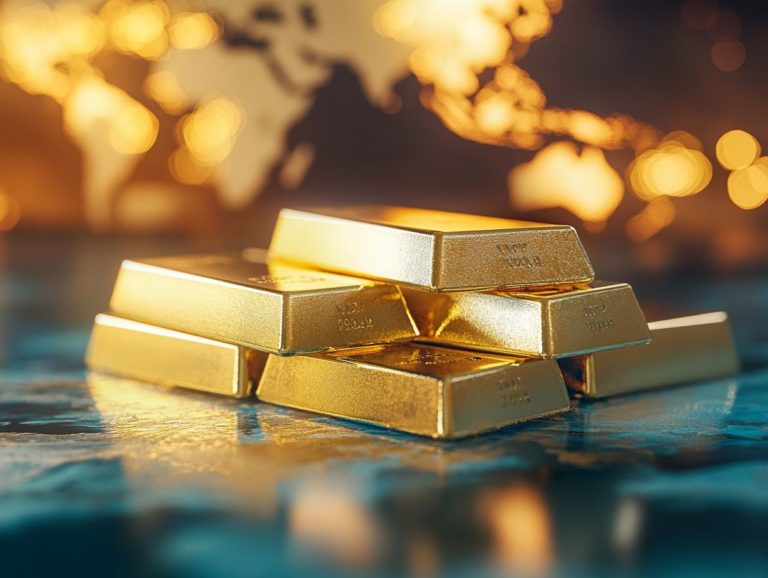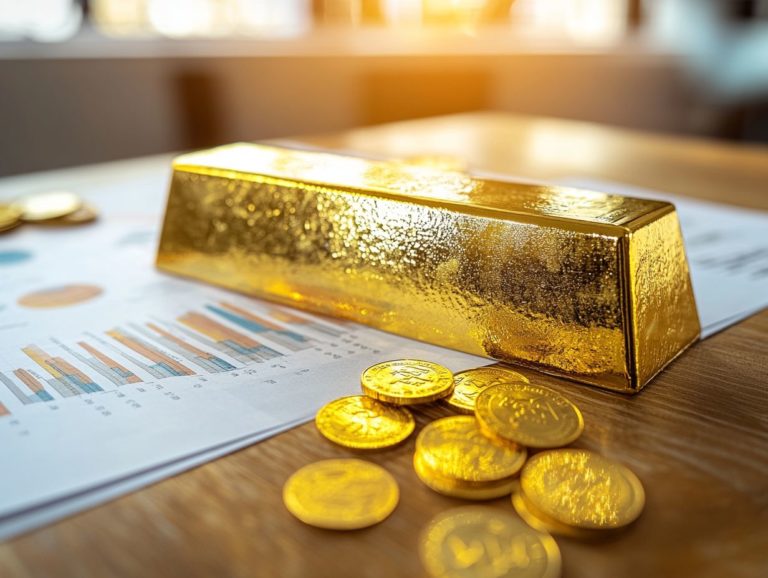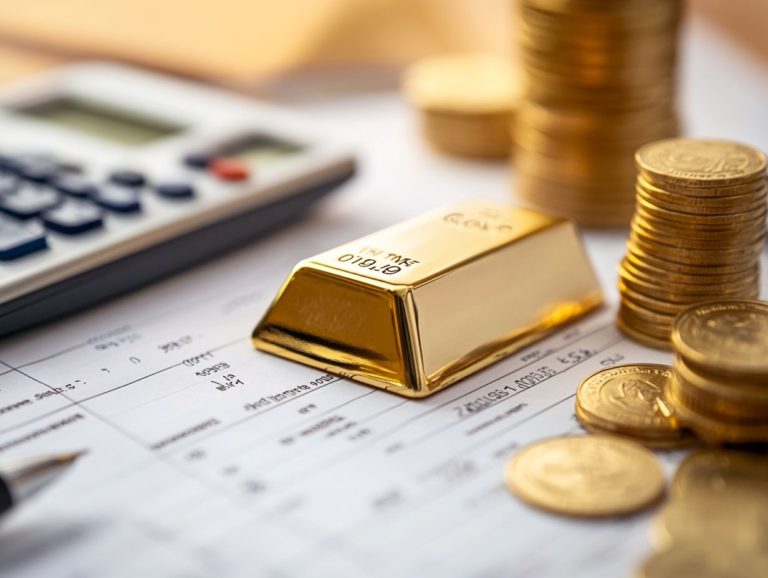5 Essential Gold Investment Trends to Watch
As the global economy evolves, gold stands as a timeless asset, captivating both seasoned investors and newcomers alike.
This article delves into five key trends currently shaping the gold market, from anticipated price increases to the growing interest from central banks and rising demand in emerging markets.
You’ll also discover the surging popularity of gold ETFs and the shift toward digital gold investments. Whether you’re contemplating adding gold to your portfolio or simply curious about its future, this guide provides valuable insights to help you navigate the dynamic landscape of gold investment.
Contents
- Key Takeaways:
- 1. Gold Prices Are Expected to Rise
- 2. Central Banks Are Buying More Gold
- 3. Increasing Demand from Emerging Markets
- 4. Growing Popularity of Gold ETFs
- 5. Shift Towards Digital Gold Investments
- What Factors Influence the Price of Gold?
- Frequently Asked Questions
- What are the 5 essential gold investment trends to watch?
- Why is rising demand from emerging markets an important trend to watch?
- How does declining gold production affect the gold market?
- Why is increasing central bank buying of gold significant?
- How do rising inflation concerns impact gold investment?
- Why is the growing popularity of gold-backed ETFs important for investors?
Key Takeaways:
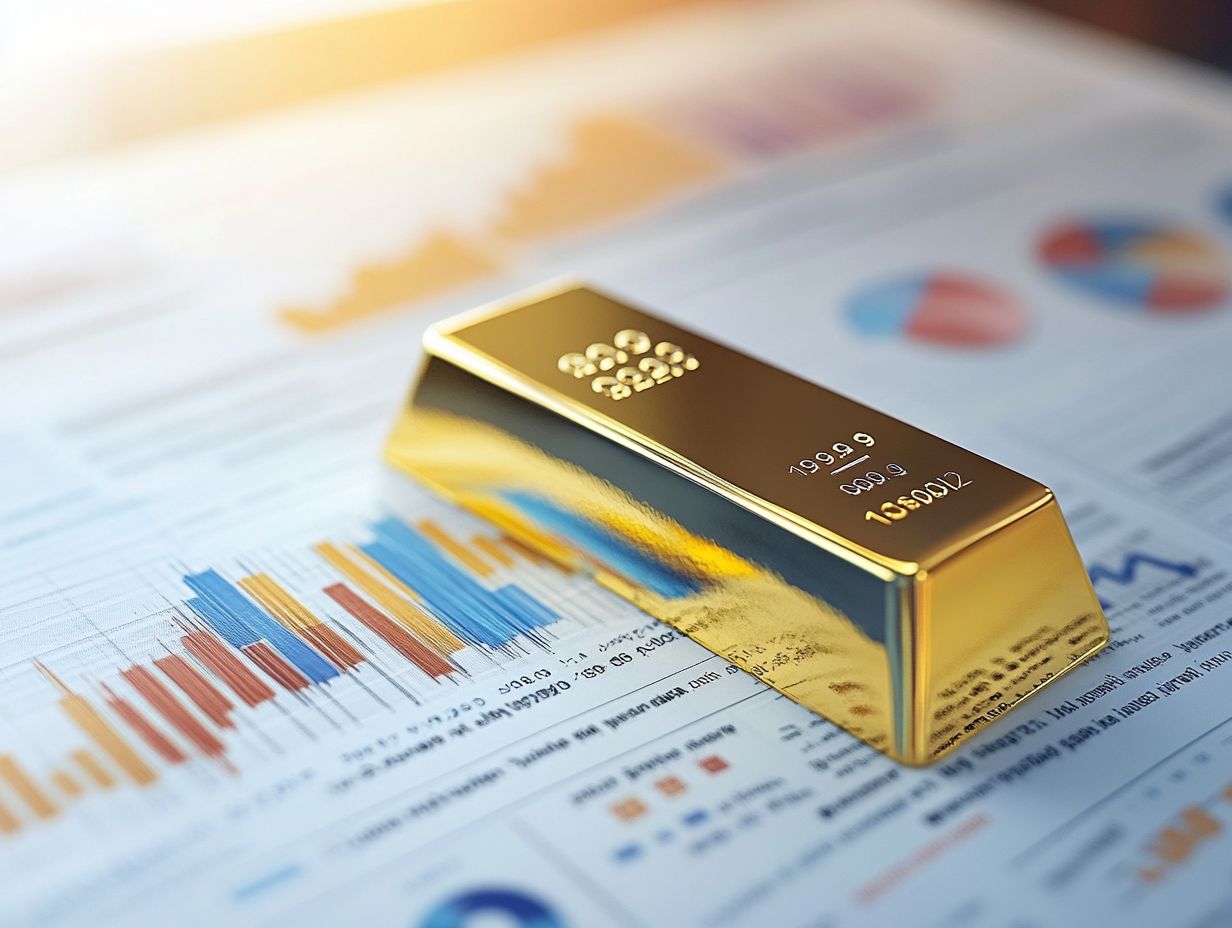
- Gold prices are predicted to continue rising, making it a favorable time to invest in this precious metal.
- Central banks around the world are increasing their gold reserves, signaling the importance of gold in the global economy.
- Emerging markets are driving the demand for gold, creating a potential growth opportunity for gold investors.
1. Gold Prices Are Expected to Rise
As economic uncertainties linger and inflation rates dance unpredictably, you might find that gold prices are poised for a rise. This makes gold an enticing option for you if you’re looking to diversify your portfolio and safeguard your wealth.
With central banks leaning toward supportive monetary policies and geopolitical tensions shaking market stability, the appeal of gold as a safe-haven asset becomes increasingly evident. More and more investors like yourself are recognizing the precious metal’s ability to protect yourself from rising prices and economic downturns.
By strategically allocating a portion of your portfolio to gold ETFs or physical bullion, you can take advantage of gold’s upward trajectory. You can also use options and futures contracts to gain potential profits while managing risk effectively.
This approach not only enhances your portfolio performance but also strengthens your long-term financial security.
2. Central Banks Are Buying More Gold
Central banks across the globe are increasingly turning to gold as a strategic asset, reflecting a notable rise in wealth management practices and a proactive response to economic crisis signals.
Several factors are driving this shift, especially the need to protect against inflation. Gold stands as a reliable store of value, safeguarding the purchasing power of a nation’s currency during turbulent economic times.
Many central banks understand the critical need for capital security in an unpredictable global market. Institutions like the central banks of Turkey and Russia have ramped up their gold purchases, fortifying national reserves and enhancing their financial resilience.
As economic uncertainties persist, the strategic accumulation of gold has emerged as a common thread among these financial powerhouses.
3. Increasing Demand from Emerging Markets
Emerging markets are witnessing a burgeoning demand for gold, fueled by rising incomes and an expanding middle class. For you, this trend is a great chance for you to diversify your wealth.
This surge in demand is particularly striking, especially with reports suggesting that the middle class in these regions is projected to swell to over 2 billion individuals by 2030.
As these consumers gain more purchasing power, they turn to gold. It serves as both a store of value and a shield against rising prices and economic uncertainty.
A recent study by the World Gold Council reveals that gold consumption in emerging markets surged by 25% in just the past year, highlighting a notable shift in investment patterns. Additionally, cultural factors, including traditional practices and celebrations, significantly drive gold purchases, solidifying its status as a crucial asset in these dynamic economies.
This is your chance to get ahead in the gold market!
4. Growing Popularity of Gold ETFs
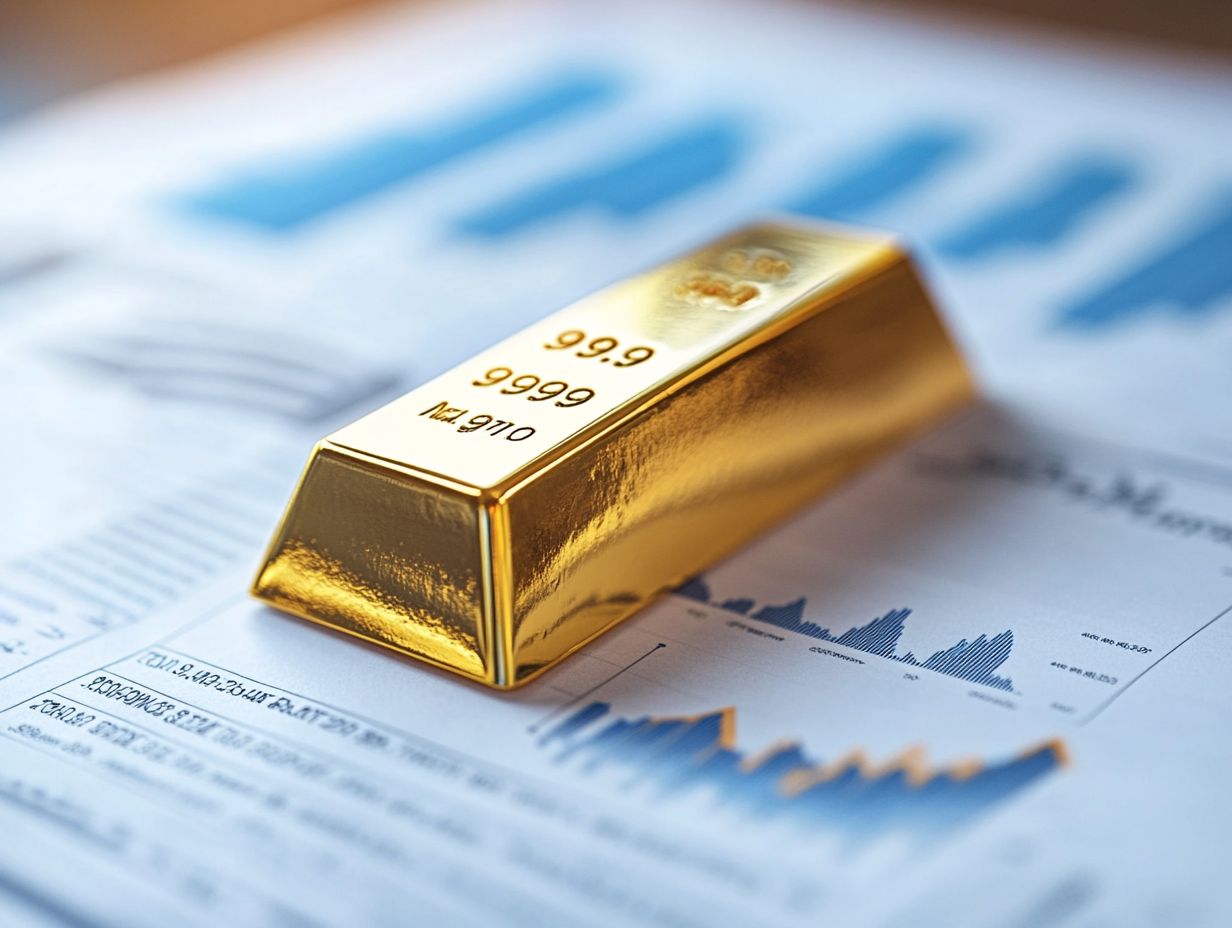
The popularity of gold ETFs (Exchange Traded Funds) provides a great option for liquidity and diversification in your investments. You don t need physical storage, which simplifies the process.
These financial tools let you track gold prices easily. Forget the hassle of storing and insuring physical bullion, and enjoy modern investment solutions that fit into your strategy.
Gold ETFs reflect a shift in investor habits. People want convenience and quick market access, leading to more interest in gold as a sustainable asset.
5. Shift Towards Digital Gold Investments
A shift towards digital gold investments is changing how you invest in this precious metal. Modern technology brings you convenience and security.
These platforms offer easy access to gold with just a few clicks and lower fees than before. It s an ideal choice if you want to expand your portfolio without the storage hassle.
However, be cautious of potential risks like market ups and downs, and the reliability of the technology. Assessing these risks ensures that digital gold meets your investment needs.
What Factors Influence the Price of Gold?
Several key factors affect gold prices, including market demand, economic uncertainties, inflation, and geopolitical events. Each of these can sway your trading decisions.
For example, during economic unrest, investors often flock to gold as a safe haven, increasing its demand and prices. Inflation can reduce buying power, prompting more people to seek gold’s stability.
Geopolitical tensions can also cause quick market changes. These events often lead to price spikes, showing how interconnected these factors are in influencing investor behavior.
How Can Investors Benefit from Gold Investment Trends?
You can gain significant advantages from current gold investment trends. By adding gold to your portfolio, you can protect yourself during economic fluctuations.
In today s unpredictable market, gold shines as a reliable hedge against inflation. Allocating some of your assets to gold increases diversification, helping to manage stock market risks.
To seize this opportunity, explore various options:
- Gold exchange-traded funds (ETFs)
- Physical gold coins
- Gold bars
Customize your strategy now to maximize your gold investment potential. Staying informed about gold investment trends will help you choose the best time to invest in gold.
What Are the Risks of Investing in Gold?
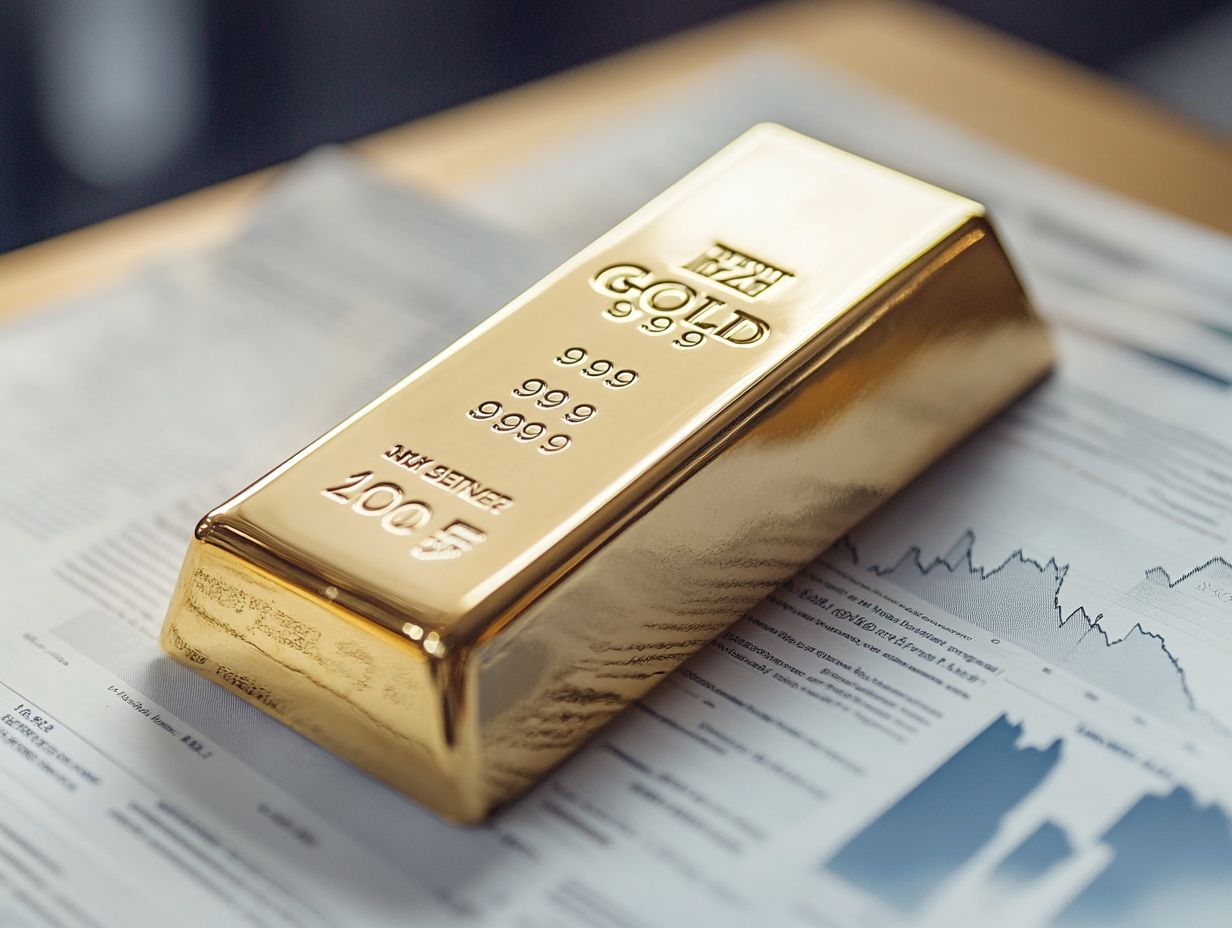
Investing in gold can certainly offer a host of advantages. However, it s crucial to recognize the inherent risks at play. You ll encounter market volatility, fluctuating prices, and various economic factors that can impact your returns.
Be particularly wary of how unpredictable gold prices can be. They can swing dramatically based on global economic conditions. If you opt for physical gold, you’ll face storage challenges, such as the risk of theft or loss. This can complicate your investment strategy. Geopolitical tensions and inflationary pressures often influence the gold market, adding another layer of uncertainty.
To navigate these risks effectively, consider:
- Diversifying your investments
- Utilizing secure storage solutions
- Staying informed about economic trends
These strategies can significantly mitigate potential downsides, enabling you to maximize the benefits of your gold holdings. Additionally, learning how to stay ahead of precious metals trends can enhance your investment strategy.
How Can One Incorporate Gold into Their Investment Portfolio?
Incorporating gold into your investment portfolio can be a savvy move. Various strategies can enhance diversification and serve as a buffer against inflation and economic downturns.
You can confidently purchase physical gold in the form of coins or bars. This ensures you have tangible assets that can be stored securely. Alternatively, consider gold exchange-traded funds (ETFs). They offer the convenience of easier trading while providing exposure to gold’s benefits, all without the complexities of storage.
If you’re looking for a more exciting investment, mining stocks could be your next step. By investing in companies that extract and sell gold, you may tap into potentially higher returns during price surges.
Balancing these gold strategies with other assets in your portfolio is essential. This approach helps create a well-rounded strategy for managing risk and reward, effectively minimizing potential losses during periods of market volatility.
What Are the Different Ways to Invest in Gold?
You have an array of options for investing in gold, including physical gold, gold ETFs, stocks in gold mining companies, futures contracts, and even digital gold offerings. Each option has its own unique benefits and considerations.
When evaluating which approach to take, consider factors such as liquidity, ease of storage, and cost-effectiveness. Physical gold, like coins and bars, presents a tangible asset that can serve as a hedge against inflation. However, it requires secure storage and may incur higher transaction fees.
Gold ETFs provide a streamlined way to invest without the complexities of physical ownership. However, you may encounter management fees. Investing in stocks of gold mining companies can lead to exciting dividends and capital gains. Be mindful that these come with additional risks related to the company’s performance.
Digital gold offers a modern alternative. It enables you to own gold in a virtual format; however, consider the reliability and security of the platforms you choose. Ultimately, understanding your individual financial goals, risk tolerance, and investment timelines will significantly guide you in selecting the most suitable gold investment option, especially when you explore key indicators for gold investment.
What Are the Long-Term Prospects for Gold Investments?
Gold investments can be a smart choice for your financial future. The signs are looking good!
The long-term prospects for your gold investments appear quite promising, given the myriad market trends and economic factors that continue to elevate gold as an essential asset for wealth preservation and risk management.
In the face of global economic uncertainties—think inflationary pressures and geopolitical tensions—you might find yourself gravitating towards gold, not just for its intrinsic value but also for its historical prowess in hedging against currency fluctuations. To make informed decisions, it’s crucial to understand how to analyze precious metals market trends.
Expert insights indicate that during periods of financial instability, gold often shines brightly, frequently outperforming other asset classes. As central banks around the world diversify their reserves, the demand for gold is expected to remain robust.
By examining past market behaviors, you can gain valuable insights into potential outcomes, further solidifying gold’s reputation as a reliable long-term component in your investment portfolio.
Frequently Asked Questions
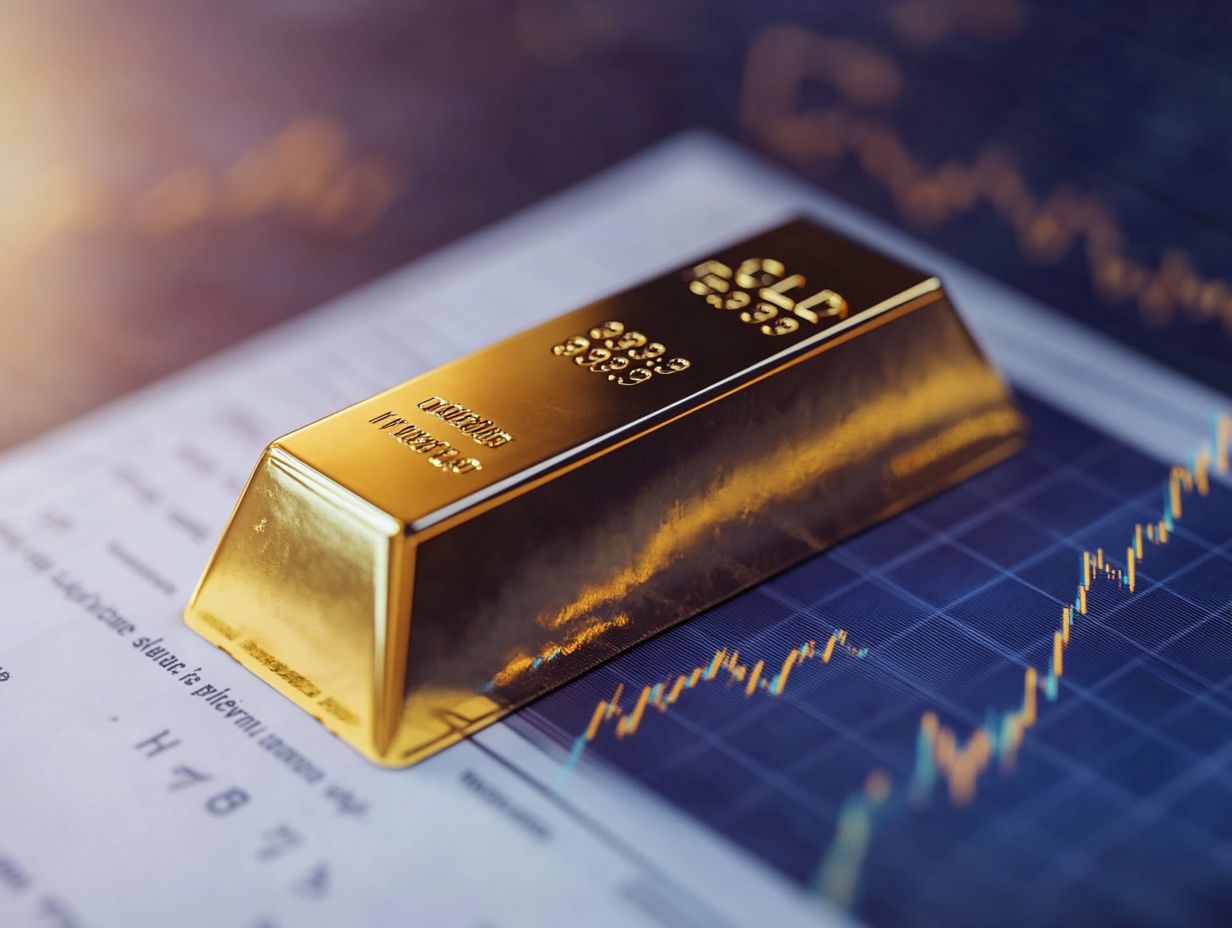
What are the 5 essential gold investment trends to watch?
The 5 essential gold investment trends to watch are:
- Rising demand from emerging markets
- Declining gold production
- Increasing central bank buying
- Rising inflation concerns
- Growing popularity of gold-backed exchange-traded funds (ETFs)
Why is rising demand from emerging markets an important trend to watch?
Rising demand from emerging markets, such as China and India, is crucial because these countries have a large population and a growing middle class with increasing disposable income. As their economies continue to grow, the demand for gold as a store of value and symbol of wealth is expected to rise.
How does declining gold production affect the gold market?
Declining gold production means less physical gold available, leading to a supply shortage that can drive up prices. This trend is likely to persist as mining costs increase and reserves of major gold mines decline.
Why is increasing central bank buying of gold significant?
In recent years, central banks have been increasing their gold reserves, signaling their lack of confidence in government-issued money and the need to diversify. This trend is expected to continue as central banks aim to reduce reliance on the US dollar and other currencies.
How do rising inflation concerns impact gold investment?
Rising inflation concerns can boost the demand for gold as an inflation hedge. As paper currencies lose purchasing power, investors often turn to gold as a safe haven to protect their wealth, especially during economic uncertainty and market volatility.
Why is the growing popularity of gold-backed ETFs important for investors?
Gold-backed ETFs offer investors a convenient and liquid way to invest in gold without physically owning the metal. As these investment vehicles grow in popularity, they significantly impact the demand and price of gold in the market.
Considering these trends, now might be the perfect time to explore gold investments for your portfolio!










